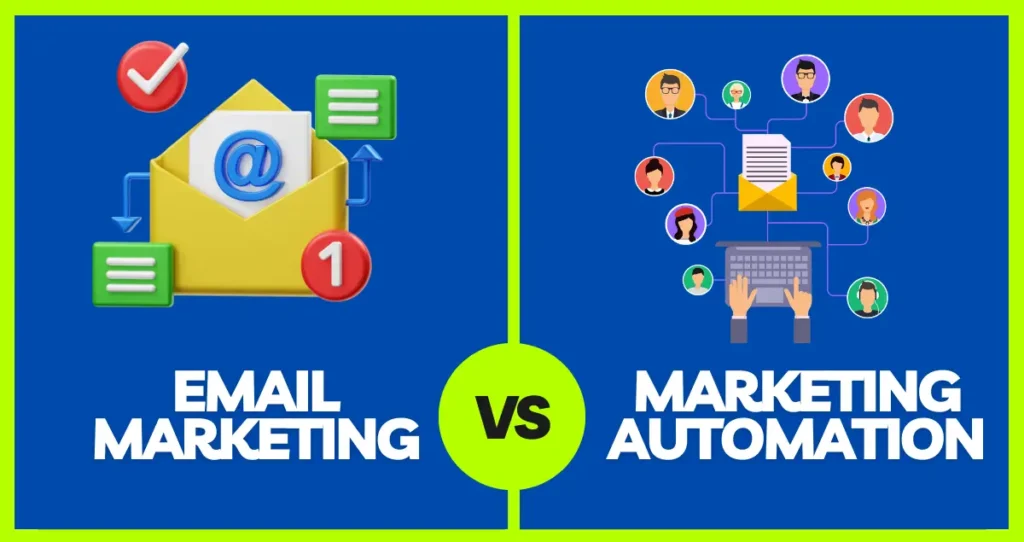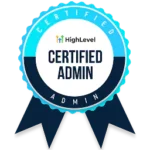Appointment Setting
Step into the world of outbound appointment setting—it’s like the friendly handshake of business, a chance to connect, and a key to unlocking meaningful conversations. This blog delves into the evolving landscape of outbound appointment setting, exploring its significance in fostering meaningful client relationships. As markets shift and technologies advance, adapting to new trends becomes paramount. We’ll unravel the latest innovations and strategies that redefine outbound appointment settings, highlighting the importance of staying agile in a rapidly changing landscape. Join us as we navigate the intricacies of outbound appointment settings, where proactive outreach meets the ever-evolving demands of modern business.
Key Takeaways
Personalization and Relationship-building
- Prioritize personalized communication to establish genuine connections.
- Emphasize understanding client needs for tailored appointment settings.
- Relationship-building is integral for long-term success in outbound strategies.
Technology’s Role in Enhancement
- Leverage technology for targeted outreach and efficient scheduling.
- Utilize CRM systems for streamlined data management and client insights.
- Automation enhances the scalability and precision of outbound efforts.
Best Practices for Modern Appointment Setting
- Embrace multi-channel communication for increased accessibility.
- Timing matters—optimize outreach based on the prospect’s preferences.
- Regularly update and refine strategies to align with evolving market trends.
- Foster open communication, active listening, and adaptability for success.
Part 1: Understanding the Basics of Outbound Appointment Setting
What is Outbound Appointment Setting and Its Significance?
Outbound appointment setting is a proactive strategy where businesses reach out to potential clients to schedule meetings or interactions. The purpose is twofold: to generate leads and to build meaningful customer relationships. By initiating direct contact, businesses can tailor their pitch, understand client needs, and position their offerings effectively.
This dynamic approach not only drives lead generation but also lays the foundation for robust customer relationships. Outbound appointment setting is a strategic tool in the sales arsenal, allowing businesses to take the initiative, showcase their value, and foster connections that extend beyond a single transaction, ultimately contributing to long-term business success.
The Transformation of Cold Calling in Outbound Sales
The landscape of cold calling in outbound sales has undergone a remarkable transformation in recent years. Traditional cold calling techniques have evolved, embracing a more personalized and strategic approach. Automation has become a powerful ally, streamlining processes and enhancing efficiency. However, the key lies in striking the right balance between automation and the human touch.
Modern cold calling is about leveraging technology for data-driven insights while preserving the authenticity of human connection. This transformation reflects a shift from quantity to quality, focusing on targeted and meaningful interactions that resonate with prospects. The evolution of cold calling highlights a dynamic integration of innovation and personalization, creating a more effective and engaging outbound sales approach.
The Transformation of Cold Calling in Outbound Sales
Technological advancements have ushered in an era where efficiency, precision, and scalability define the approach to scheduling crucial interactions.
Streamlined Outreach:
Technology has streamlined the outreach process, allowing businesses to connect with potential clients through various channels seamlessly. Automated tools, such as email campaigns and social media outreach, enable targeted communication, reaching prospects at the right time with tailored messages.
Enhanced Data Management:
The role of Customer Relationship Management (CRM) systems cannot be overstated. These sophisticated tools provide a centralized platform for managing client data, understanding preferences, and tracking interactions. This not only simplifies appointment scheduling but also contributes to a more holistic understanding of client needs.
Automation and Precision:
Automation plays a significant role in optimizing appointment-setting strategies. By automating routine tasks, businesses can focus on the strategic aspects of outreach, ensuring that each interaction is meaningful and aligned with the prospect’s journey. Automated follow-ups, reminders, and personalized communication contribute to a smoother and more efficient process.
Human Touch in the Digital Age:
While technology enhances efficiency, maintaining a human touch remains paramount. The integration of technology should complement, not replace, the personalization that builds meaningful relationships. Striking the right balance ensures that technology serves as a tool for empowerment rather than a barrier to genuine connections.
Real-time Insights:
Modern technology provides real-time insights into prospect behavior, enabling businesses to adapt their strategies dynamically. These insights empower sales teams with data-driven decision-making, allowing them to refine their approach based on prospect engagement and feedback.
Leveraging New Technologies for Enhanced Efficiency
Customer Relationship Management (CRM) systems have emerged as indispensable tools, providing a centralized hub for organizing client information, tracking interactions, and tailoring outreach strategies.
Automated dialers have revolutionized the way businesses connect with potential clients. Streamlining the calling process, these tools ensure timely and personalized outreach, maximizing the chances of securing appointments. Additionally, the integration of social media platforms into appointment setting strategies adds a dynamic layer, allowing businesses to engage with prospects on platforms they frequent.
The benefits of leveraging these technologies extend beyond mere efficiency. With CRM systems, businesses gain in-depth insights into client preferences and behaviors, facilitating a more personalized approach to appointment setting. Automated dialers not only save time but also enhance the consistency and precision of outreach efforts. Social media integration brings a modern touch, allowing businesses to foster connections and stay top-of-mind in a digital age.
Balancing Automation with Personal Connection
While automation streamlines processes, it’s crucial to preserve the human element to foster genuine relationships.
Importance of Human Touch:
Automated processes risk feeling impersonal, potentially undermining the authenticity of interactions. The human touch brings warmth and understanding, essential elements in establishing trust and rapport. Striking the right balance ensures that efficiency doesn’t come at the expense of connection.
Strategies for Personalization:
To infuse a personal touch into automated communications, businesses can employ several strategies. Utilizing dynamic scripts that allow for tailored messaging based on prospect responses adds a layer of personalization. Incorporating personal details gleaned from CRM systems demonstrates a genuine interest in the prospect, making interactions more meaningful.
Moreover, leveraging automated tools to schedule personalized follow-ups, sending thoughtful reminders, or incorporating the prospect’s name into communications contributes to a personalized experience. The key is to use automation as an enabler, allowing businesses to scale their efforts while maintaining the authenticity that forms the bedrock of successful appointment setting.
Part 2: Advanced Strategies for Outbound Appointment Setting
Employing a multifaceted approach that integrates traditional methods with modern channels has proven to be highly effective.
Diversified Outreach:
Blend the time-tested efficacy of cold calling with the efficiency of emails and the expansive reach of social media. This diversified approach ensures that businesses connect with prospects through channels most convenient for them, maximizing the chances of securing appointments.
Well-Researched Contact Lists:
The foundation of successful appointment setting lies in a well-researched and targeted contact list. Precision in targeting ensures that outreach efforts are directed toward prospects who align with the business’s offerings. Thorough research allows for a more personalized approach, showcasing a genuine understanding of the prospect’s needs.
Personalized Scripts:
Crafting personalized scripts is a game-changer. Tailoring communication based on prospect data not only enhances the relevance of the message but also demonstrates a commitment to understanding the prospect’s unique challenges and aspirations. Personalization transforms the interaction from a transactional exchange to a meaningful engagement.
Combining Outsourcing with In-House Efforts
Outsourcing appointment setting offers distinct advantages, including cost efficiency and access to specialized expertise. However, challenges such as communication barriers and potential misalignment with brand values may arise. To harness the strengths of both outsourcing and in-house efforts, a hybrid model emerges as a strategic solution.
Advantages of Outsourcing:
Outsourcing brings scalability and flexibility to appointment setting efforts. External agencies often possess specialized skills and resources, allowing businesses to tap into a broader talent pool and adapt to varying workloads without the overhead costs.
Challenges and Mitigation:
Overcoming communication challenges and ensuring alignment with brand values are critical considerations in outsourcing. Clear communication channels, thorough training, and establishing a shared understanding of brand ethos can mitigate these challenges.
Hybrid Model:
The hybrid model integrates the best of both worlds. By combining the agility of outsourced solutions with the in-depth understanding of brand nuances from in-house teams, businesses create a dynamic and adaptable appointment setting strategy. This model enables flexibility, cost-effectiveness, and ensures that each outreach effort aligns seamlessly with the brand’s identity.
Key Performance Metrics and Optimization
The conversion rate serves as a key metric, offering insights into the effectiveness of each stage in the sales process.
Importance of Conversion Rate Tracking:
Monitoring conversion rates provides a real-time snapshot of the sales pipeline’s health. It highlights areas of strength and identifies potential bottlenecks, enabling businesses to make informed decisions and allocate resources effectively.
Analyzing and Improving Conversion Rates:
Techniques to analyze conversion rates involve segmenting data to understand performance at different stages of the pipeline. By identifying high-performing stages and areas for improvement, businesses can tailor strategies to enhance conversion rates. Implementing targeted improvements, such as refining communication strategies or optimizing follow-up processes, ensures a continual evolution toward higher conversion rates and overall sales success.
Essential KPIs in Appointment Setting
Understanding and tracking key performance indicators (KPIs) is pivotal in optimizing appointment setting strategies. Among the crucial KPIs are:
Conversion Rates: Measure the percentage of prospects successfully converted to scheduled appointments, providing insights into the efficiency of the process.
Response Rates: Gauge the effectiveness of outreach efforts by tracking the percentage of prospects responding to initial contact attempts.
Appointment Show-Up Rates: Monitor the rate at which scheduled appointments result in actual interactions, indicating the quality of leads and the effectiveness of pre-appointment communication.
Tracking these KPIs enables businesses to refine their approach continually. Insights gained from analyzing these metrics empower strategic decision-making, allowing businesses to adapt and optimize their appointment setting efforts for maximum impact and success.
Conclusion
Mastering the art of appointment setting requires a dynamic approach that blends innovation, technology, and a deep understanding of client needs. As businesses navigate the evolving landscape, the integration of diverse outreach channels, personalized scripts, and strategic hybrid models emerges as a winning formula. The essential KPIs serve as guiding lights, offering insights to refine and enhance strategies continually. Whether leveraging technology, combining in-house with outsourcing, or analyzing conversion rates, the journey of appointment setting is a nuanced one. With adaptability and a commitment to meaningful connections, businesses can not only secure appointments but foster enduring relationships and drive sustained success.







